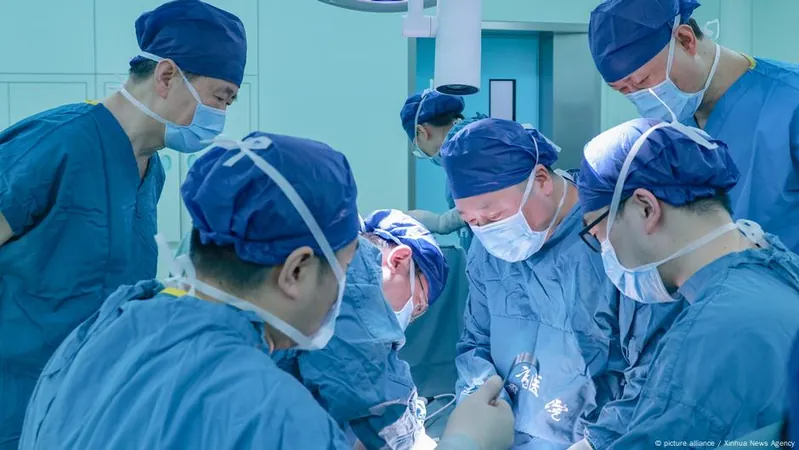
Revolutionary Pig-to-Human Lung Transplant Achieves Major Milestone
2025-08-26
Author: Olivia
Groundbreaking Surgery Marks New Era in Transplantation
In a remarkable medical breakthrough, surgeons in China have successfully performed a pig-to-human lung transplant, paving the way for innovative solutions to the critical shortage of donor organs worldwide. This pioneering procedure involved transplanting a genetically modified lung from a pig into a brain-dead human, showcasing the potential of xenotransplantation even as significant challenges remain ahead.
A Milestone in Xenotransplantation
The surgery, conducted at the National Clinical Research Center for Respiratory Disease in Guangzhou, saw the pig lung maintain its viability and functionality for an astonishing 216 hours, or nine full days. During this period, the organ exhibited no signs of rejection or infection, a significant milestone in xenotransplantation—the transplantation of organs from one species to another.
Understanding the Challenges
While recent advances have emerged in heart and kidney transplants from pigs to humans, the lungs pose unique hurdles due to their complex anatomical and physiological structures. Unlike other organs, lungs are directly exposed to external air, heightening the risk of infections. Despite these obstacles, the transplanted lung from a 22-month-old Chinese Bama Xiang pig thrived under observation.
A Glimmer of Hope for Patients
Researchers emphasized that this success, which included no signs of hyperacute rejection or severe infection during the monitoring period, highlights the progress achieved in genetic modification techniques and immunosuppressive therapies. However, they also cautioned that extensive further testing and development are necessary before this procedure can be widely implemented in clinical settings.
Looking Ahead
This breakthrough not only demonstrates the potential of genetically engineered organs but also ignites hope for countless patients on waiting lists for transplants. As scientists continue to unravel the complexities of xenotransplantation, we may be on the brink of a transformative approach to organ donation that can save lives.









 Brasil (PT)
Brasil (PT)
 Canada (EN)
Canada (EN)
 Chile (ES)
Chile (ES)
 Česko (CS)
Česko (CS)
 대한민국 (KO)
대한민국 (KO)
 España (ES)
España (ES)
 France (FR)
France (FR)
 Hong Kong (EN)
Hong Kong (EN)
 Italia (IT)
Italia (IT)
 日本 (JA)
日本 (JA)
 Magyarország (HU)
Magyarország (HU)
 Norge (NO)
Norge (NO)
 Polska (PL)
Polska (PL)
 Schweiz (DE)
Schweiz (DE)
 Singapore (EN)
Singapore (EN)
 Sverige (SV)
Sverige (SV)
 Suomi (FI)
Suomi (FI)
 Türkiye (TR)
Türkiye (TR)
 الإمارات العربية المتحدة (AR)
الإمارات العربية المتحدة (AR)